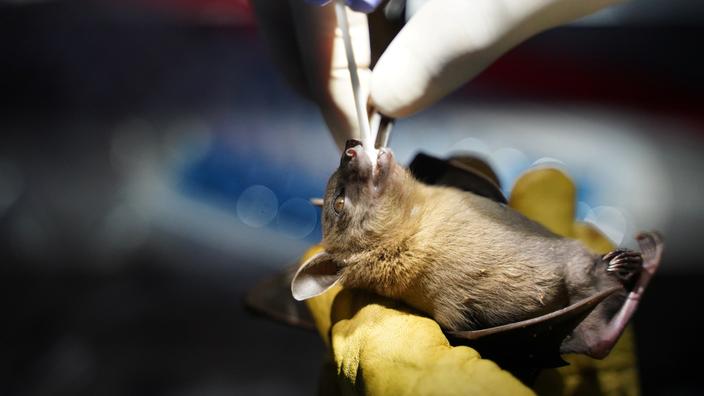This could be a “
major breakthrough
” in the search for the origins of Covid-19: researchers at the Institut Pasteur have identified viruses similar to SARS-CoV-2 in bats in northern Laos, capable of infect humans.
To read also Frédéric Keck: "Bats deserve to be protected"
The conclusions of this work, in open access since Wednesday, September 22 on the scientific platform "
Research Square
", must still be the subject of a peer review with a view to publication in a scientific journal. In order to better understand the evolution of SARS-CoV-2 and its origins, which have been the subject of intense speculation for months, researchers from the Institut Pasteur in Paris, the Institut Pasteur in Laos and the The National University of Laos led at the end of 2020 and the beginning of 2021 a field mission in the north of the country with different species of bats living in limestone caves.
"
The initial idea was to try to identify the origin of this epidemic
", explains to AFP Marc Eloit, head of the "
discovery of pathogens
"
laboratory
at the Pasteur Institute in Paris, whose teams have analyzed the various samples collected. "
For various reasons which accumulate, it is suspected that certain insectivorous bats could be the reservoir of the virus
".
The samples took place in an area that is part of an immense karstic relief, geological formations mainly made up of limestone, which also encompasses northern Vietnam and southern China. "
Laos shares this common territory with southern China, filled with cavities where bats live, hence the idea of going there
", continues Marc Eloit. Because what happens there is representative of this ecosystem.
Conclusions of the Institut Pasteur analyzes: the virus sequences found in bats are almost identical to those of SARS-CoV-2 and the researchers have been able to demonstrate their ability to allow viruses to enter human cells.
However, the viruses studied lacked the "
furin site
" present in SARS-CoV-2, a function that activates the so-called Spike protein by allowing the virus to better enter human cells and whose existence conditions the power. pathogen of the virus.
"A major breakthrough"
Several hypotheses could explain this missing link, argues Marc Eloit. “
Perhaps a non-pathogenic virus first circulated in humans before mutating,
” he emphasizes, for example. "
Or a virus very close to the viruses identified has this furin site, but we have not yet found it
". Another question: "
how did the bat virus found in caves get to Wuhan
", in China, the known starting point of the pandemic, 2000 km away? No answer for the moment.
Anyway, this study "
is a major advance in the identification of the origin of SARS-CoV-2
", believes Marc Eloit.
The main conclusion would be that there are viruses very similar to SARS-CoV-2 in bats capable of infecting humans without an intermediate animal, such as the pangolin.
At the end of August, WHO experts, author of a report on the origin of the Covid, warned that research was "
at a standstill
" on this subject.
Read alsoCoronavirus: "The bat is unfairly demonized"
They were part of a team of 17 international experts appointed by the WHO and 17 Chinese experts, whose report was published on March 29, after an investigation conducted in January in Wuhan. Without providing a clear answer, this report listed four more or less probable scenarios. The one considered most likely was transmission of the virus to humans via an animal infected with a bat. Then came the hypotheses of a direct transmission without an intermediate animal, of transmission through food, in particular frozen meat, and finally of an accidental laboratory leak, however deemed “
extremely improbable
”. Since then, "
no data
" supporting "
the hypothesis of a laboratory leak was neither published nor submitted to the WHO,
”noted the experts.










/cloudfront-eu-central-1.images.arcpublishing.com/prisa/KMEYMJKESBAZBE4MRBAM4TGHIQ.jpg)


